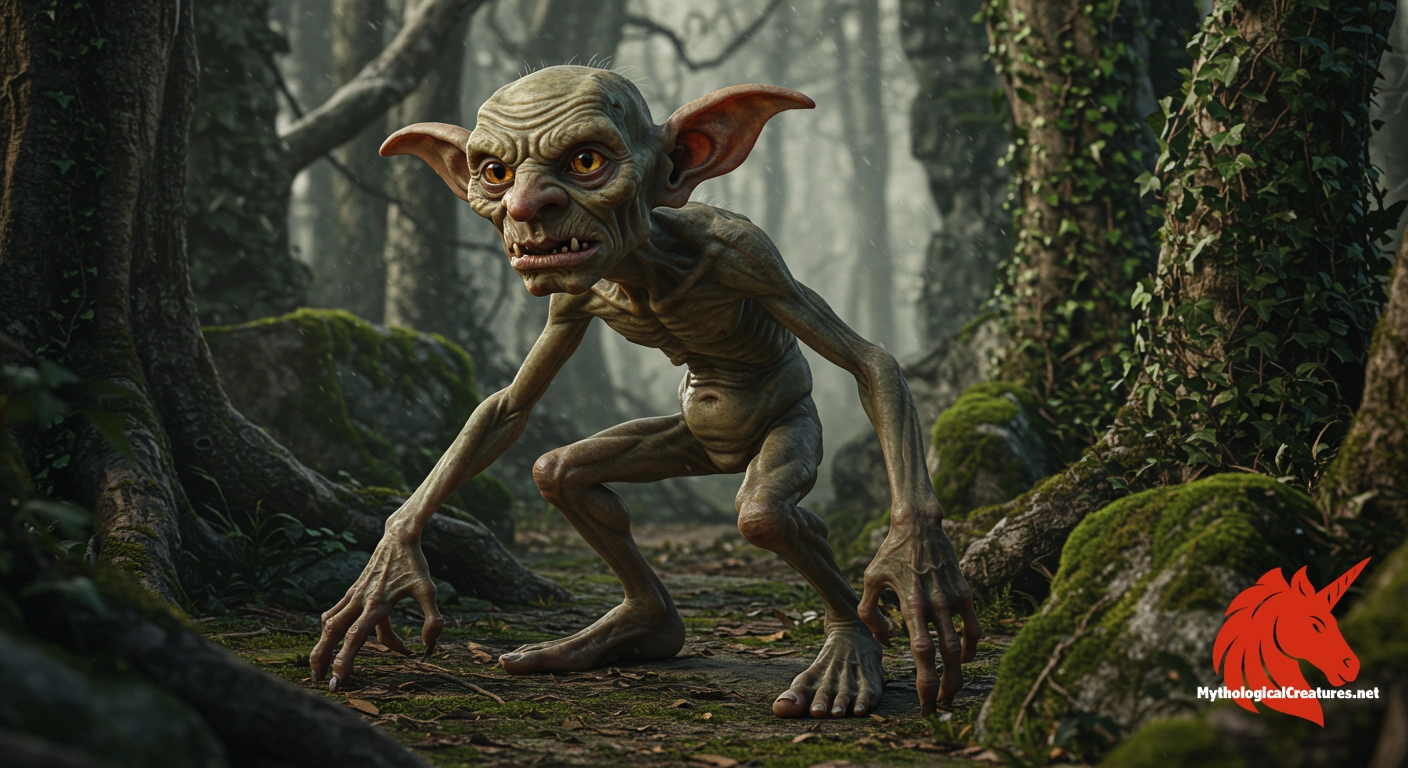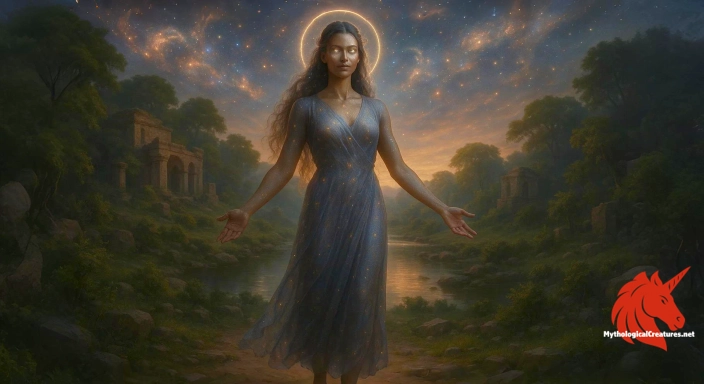Goblin: Goblins are small, grotesque, and mischievous humanoid creatures found in European folklore.

Goblin
Goblin - Goblins embody the unpredictable nature of the supernatural in folklore, representing the fine line between mischief and malevolence.
Origins & First Encounters
Goblins have long intrigued audiences with their blend of mischief, menace, and uncanny charm, emerging from the depths of medieval imagination to become staples of European folklore. Traced back to the Middle Ages, these creatures were first depicted as small, grotesque, and ambiguous figures, whose roles oscillated between benevolent household spirits and deceitful fiends. Their origins are interwoven with the cultural and societal shifts of the time, reflecting both the fears and fascinations of communities facing the unexplained. Over successive generations, goblins have been shaped by diverse narratives, each imbuing them with a unique blend of magic and malevolence. The creature’s enduring allure lies in its capacity to both terrify and captivate, acting as a mirror to human anxieties about the unknown. Early tales offered a glimpse into a world where the boundaries between the natural and the supernatural were fluid and mutable. These mutable entities are testament to the imaginative spirit that sought to understand misfortune and mystery. Their evolution from obscure myth to a recognised symbol of the uncanny underlines a rich cultural dimension that continues to inform modern fantasy. As living embodiments of trickery and transformation, goblins persist as potent allegories for the fluid nature of identity and morality. Their enigmatic presence has consistently sparked both delight and dread, securing them a permanent place in mythic tradition.
Source Texts & Tale Variants
The recorded history of goblins is embedded in a mosaic of texts, manuscripts, and oral traditions that have travelled through time and space. Early medieval chronicles and bestiaries, although fragmentary in detail, offer glimpses of these elusive entities as figures endowed with both capriciousness and cunning. Multiple versions of the goblin myth were relayed by travelling storytellers, each adapting the creature to suit regional sensibilities and spiritual needs. Numerous folktales detail escapades involving goblins who both aid and hinder, thereby enriching their mythological profile with an inherent duality. Written records from various parts of Europe, though sporadic, have magnified these accounts through ornate narrative embellishments that stress their magical capacities. As the stories were passed down orally, local traditions infused the myth with unique attributes such as shapeshifting and an affinity for trickery. Compilations of folklore later cemented the goblin’s place alongside other diminutive supernatural beings, reinforcing their significance in cultural memory. Despite the scarce singular authoritative source, the shared motifs across disparate texts underscore a universal interpretation of these beings. Story variants often diverge in tone, with some emphasising playful mischief and others opting for a darker, more foreboding portrayal. The interplay between written records and local narration has allowed the goblin to remain an adaptable and perennial figure in myth.
Form & Powers
Goblins are typically portrayed as small in stature yet striking in their unusual and often unsettling appearance. Their physical features tend to be exaggerated, with contorted faces, elongated noses, and pointed ears that emphasise an otherworldly origin. The creatures are often depicted with rough, mottled skin in shades that echo the earthy tones of the landscapes they inhabit, adding to their spectral allure. Many narratives describe their eyes as gleaming with an intelligent, sometimes malevolent, light, hinting at hidden powers beneath their diminutive forms. Their frames, though slight, exhibit a wiry agility that complements their reputation for nimbleness and craftiness. Variations in description are abundant, with some traditions attributing subtle reptilian or scaly characteristics that heighten their sense of alienation from the human. Clawed hands and sharp features have been recurrent motifs in visual and literary portrayals, reinforcing their role as emblematic tricksters. Some accounts even speak of ebullient or contorted postures that mirror their unpredictable nature in battle and misadventure. This array of physical attributes not only contributes to their ominous mystique but also serves as a visual shorthand for their dual capabilities of destruction and deceit. The blend of human and bestial qualities in these depictions invites ongoing reinterpretation as new cultural contexts emerge.
Regional Faces
Across the varied landscapes of Europe, regional narratives have reshaped the goblin myth to reflect unique local traditions and social dynamics. In northern settings, goblins often assume the guise of mischievous yet endearing sprites, whose minor transgressions are met with both exasperation and affection. Conversely, in southern regions, they are more frequently portrayed as treacherous creatures lurking in the shadows of rustic villages, their malevolence underscored by brutal, folktale cautionary undertones. Eastern European tales sometimes embed these beings within the larger framework of faerie lore, blurring the lines between benevolent nature spirits and dangerous tricksters. In the British Isles, elements of goblin lore merge with stories of imps and brownies, yielding a hybrid narrative that reflects local superstitions and community values. Local dialects and traditions have yielded a variety of names and nuances, with each region colouring the goblin’s character with its own distinctive moral and aesthetic palette. Rural storytelling festivals continue to honour these adaptations, imparting fresh life to ancient legends. As different communities emphasise varying aspects of their nature, the goblin becomes a dynamic symbol of both the natural world and the hidden realms of human experience. The regional diversity highlights a shared cultural understanding that the supernatural is as mutable as the environment it inhabits. Such local reinterpretations ensure the goblin myth remains relevant and resonant through the ages.
Cultural Parallels
The goblin stands in close company with a host of other mythological sprites, sharing thematic connections with imps, brownies, and leprechauns across various cultural narratives. Much like its counterparts, the goblin exists along the borderline between helpfulness and havoc, capturing the ambivalence of a creature capable of both benevolent mischief and dark malevolence. Variations on these small beings appear in numerous cultures: from the German kobolds to the South American duendes, each reflects similar traits with regional flairs. Despite these parallels, goblins are often distinguished by their pronounced grotesquery and a tendency towards unpredictable mischief. This duality of character places them at a unique juncture in the mythological spectrum, where the playful may quickly become perilous. Their role as agents of chaos has served as a narrative device for exploring the erratic impulses of human nature and the wild forces of chance. The similarities among these diverse entities highlight a shared human fascination with the liminal, the diminutive yet potent elements of folklore. Intercultural comparisons reveal that while the specifics may shift, the underlying themes of warning, trickery, and transformation remain potent. Thus, the goblin and its kin collectively contribute to a broader mythic framework that illustrates society’s enduring need to personify the mysterious. Such comparative analysis underscores the universality of these creatures as both cautionary figures and embodiments of the unpredictable spirit of nature.
Legacy & Modern Evolution
The legacy of goblins has traversed a remarkable journey from their medieval origins to their vibrant presence in contemporary popular culture. Early depictions painted them as fearsome denizens of the night designed to instil caution among the unsuspecting, while modern reinterpretations have expanded their characterisation into multifaceted, sometimes sympathetic figures. Over the centuries, shifts in artistic style and narrative focus have allowed the goblin to metamorphose from a one-dimensional caricature into a complex symbol of subversion and ambiguity. In literature, film, and gaming, they have come to represent the enduring allure of the uncanny, engaging audiences with stories full of intrigue and moral contradiction. Their transformation is evident in works that oscillate between the seductive appeal of their sly mischief and the darker echoes of their more dangerous traits. The evolution of the goblin myth reflects broader cultural changes, notably the move towards narratives that challenge traditional binaries between good and evil. Modern portrayals often imbue these creatures with depth and nuance, exploring themes such as outsider identity and societal marginalisation. The continued fascination with goblins speaks to a wider cultural impulse to revisit and reinterpret older traditions in ways that resonate with contemporary sensibilities. As new media continue to adapt ancient myths, the goblin remains an emblem of both timeless mischief and the transformative power of folklore. Their ever-evolving legacy ensures they will continue to provoke curiosity and inspire creativity for generations to come.
Interesting Fact
One intriguing aspect of goblins is their dual portrayal in folklore, embodying both the mischievous charm of a household spirit and the dangerous unpredictability of a malevolent thief.
Support the directory
Promote your myth project and fund more research
Sponsor placements help keep this directory growing and free to use while giving your work a focused, relevant audience.
Learn how sponsorship worksQuick Creature Info
Features:
Our Mythic Legendary Rating:

Habitat:
Supernatural Powers:
Physical Attributes:
Abilities:
Behavior:
Weaknesses:
Lore:
Related Creatures, Tales or Lore
- bbrownies
- ddwarves
- dduendes
- ggnomes
- iimps
- lleprechauns
- kkobolds
References
Discover Another Mythical Legend You May Not Have Heard Of?
Uncover the mysteries of ancient folklore and expand your knowledge of legendary beings from cultures around the world.
Dare to Meet the Aditi....
Curated by the Mythological Creatures Team
Series editor: Mythological Creatures Directory
Primary desk: Northern & European Folklore Desk
(rev. November 2025)
